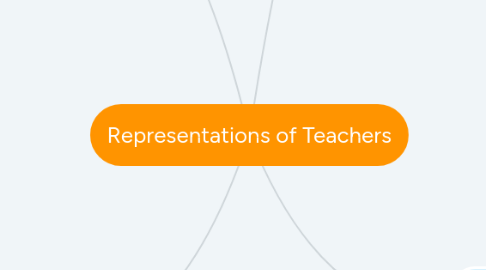
1. Teacher as Change Agent
1.1. Empower students and encourage "growth mindset"
1.1.1. Form a learning approach encouraging students to ask and answer questions based on investigation of a specific topic
1.1.1.1. Often leads to action taken by students, resulting in positive change
1.1.2. "To be an agent is to intentionally make things happen by one's actions" (Bandura, 2001, p. 2)
1.2. Incite positive change wherever you are
1.2.1. Generating and getting support for new pedagogies and teaching methods
1.2.1.1. Communicate with principals and heads of department about integrating new and innovative teaching techniques to improve learning
1.2.2. Mentor and guide students by being positive, passionate, trustworthy and understanding
2. Teacher as Learner
2.1. Attending professional development to improve teaching
2.1.1. Learn new teaching methods for different classroom dynamics, subject areas, school districts, etc.
2.1.1.1. Teachers need to be adaptable!
2.2. Practice continuous research
2.2.1. Constantly updating of knowledge through career-long learning (Allen and White, 2018, p. 371)
2.3. They are 'lifelong learners'
2.3.1. Learning FROM and WITH students in the classroom
2.3.1.1. Different insights, values and ideas
2.3.1.2. Learning styles
2.3.2. Learning new teaching strategies from other faculty members
2.3.2.1. Observation skills
2.3.2.2. Communication skills
2.3.2.3. Include a wide range of teaching strategies (APST 3.3, AITSL, 2011)
3. Teacher as Practitioner
3.1. Teach the Australian Curriculum
3.1.1. Plan curriculum documents
3.1.1.1. Use curriculum, assessment and reporting knowledge to design learning sequences and lesson plans (APST 2.3, AITSL, 2011)
3.1.2. Display and explain criteria to students
3.1.2.1. Create assessment pieces that follow the criteria and relate to Australian Curriculum
3.1.3. Effective use of APST's to create an engaging learning environment
3.1.3.1. "The Australian Professional Standards for Teachers are a public statement that describes professional knowledge, professional practice, and professional engagement required of teachers" (Queensland College of Teachers, 2011)
3.2. Lead Lessons
3.2.1. Encourage critical thinking and analysis by asking students questions
3.2.1.1. Give students opportunities to collaborate and compare ideas
3.2.2. Guide students to finding information, strengthening autonomous learning
3.2.2.1. Give instructions on how to complete a task
3.2.3. Able to answer questions that students may have about subject matter
3.2.3.1. Provide feedback to students on how to improve their work and deepen understanding. Links to APST 5.2 (AITSL, 2011)
3.3. Liaise with colleagues and parents
3.3.1. Share and compare teaching techniques and strategies for different learning environments
3.3.1.1. Seek and apply constructive feedback from supervisors and teachers to improve teaching practices (APST 6.3, AITSL, 2011)
3.3.2. Communicate with parents/guardians to ensure student is learning and understanding material
3.3.2.1. Customise classes for students to ensure optimal learning
3.3.2.1.1. Content selection and organisation (APST 2.2, AITSL, 2011)
3.3.2.2. Engage parents / carers in the educative process (APST 3.7, AITSL, 2011)
4. Teacher as Professional
4.1. Overseen by Statutory Authorities
4.1.1. Australian Institute for Teaching and School Leadership (AITSL)
4.1.2. Australian Curriculum, Assessment and Reporting Authority (ACARA)
4.1.3. Queensland Curriculum and Assessment Authority (QCAA)
4.1.4. Queensland College of Teachers (QCT)
4.2. Promote positive and ethical values
4.2.1. Follows the QCT Code of Ethics
4.2.1.1. Members of the teaching profession in Queensland are committed to the following values which underpin the profession: Integrity, Dignity, Responsibility, Respect, Justice and Care (QCT, 2008)
4.2.2. Duty of Care
4.2.2.1. Takes responsibility for the safety of all students and takes preemptive measures to remove them from harms way
4.2.2.1.1. Maintain student safety (APST 4.4, AITSL, 2011)
4.2.2.2. Understanding of "Negligence" and "Vicarious Liability" and how they impact your profession and school
4.2.2.2.1. Satisfy the duty of care by: Always using safe equipment, reporting suspected bullying to the appropriate coordinator/ principal, follow school guidelines and policies, consider what children can cope with at particular ages, and always be safety conscious and aware of possible risks in the classroom, playground or at sport (Allen and White, 2018, p. 390)
4.2.3. Create a positive learning environment for all students and encourage acceptance and understanding
4.2.3.1. Links to APST's: 1.3, 1.5, 1.6 (AITSL, 2011)
4.3. Maintains a professional reputation
4.3.1. Required to demonstrate professional competence and behaviour that exceeds standards expected of the rest of the community (Allen and White, 2018, p. 370)
4.3.2. Has an awareness and understanding of their "Social Media Footprint"
4.3.2.1. Remove anything that would tarnish your professional reputation as a teacher or anything that would put the school at risk
4.4. Have high degree of specialised knowledge
4.4.1. Have a clear understanding of subject area and effectively convey information to students
4.4.2. Constantly updating knowledge through continuous research over the course of career
4.4.3. Attend professional development workshops to further broaden teaching capabilities and strategies to support the needs of students
